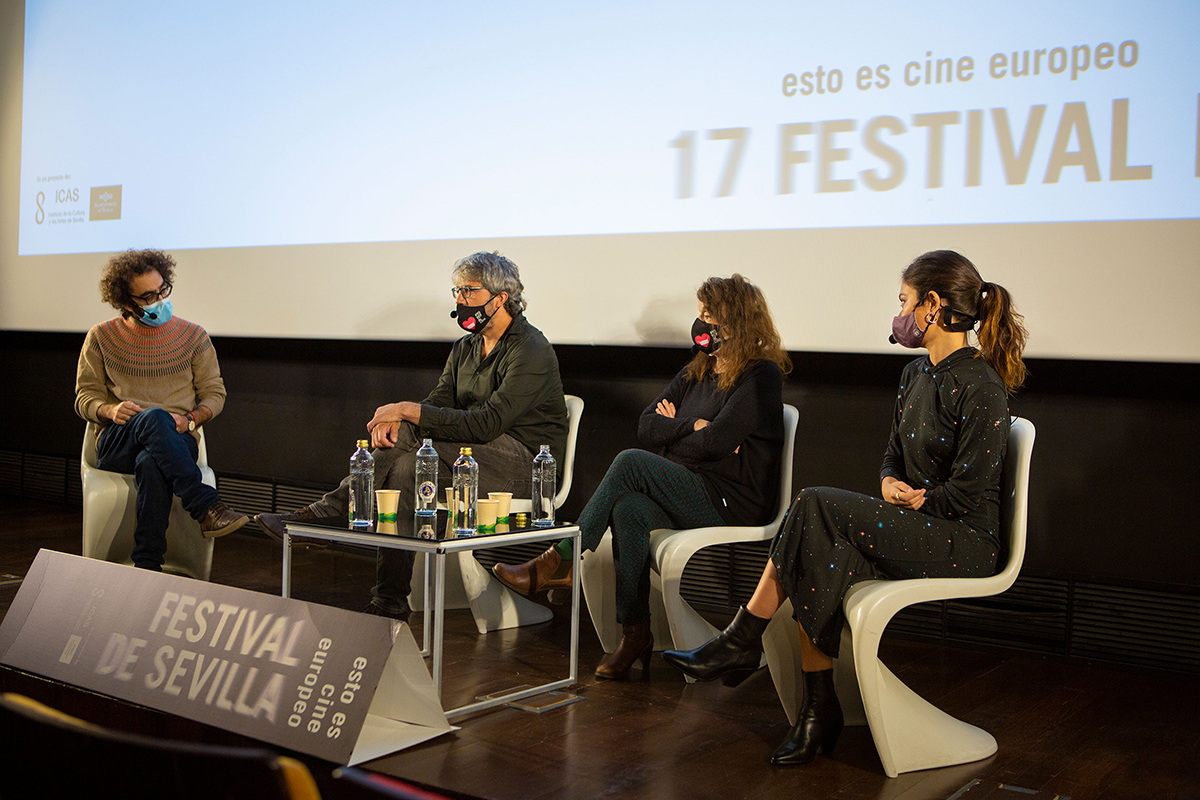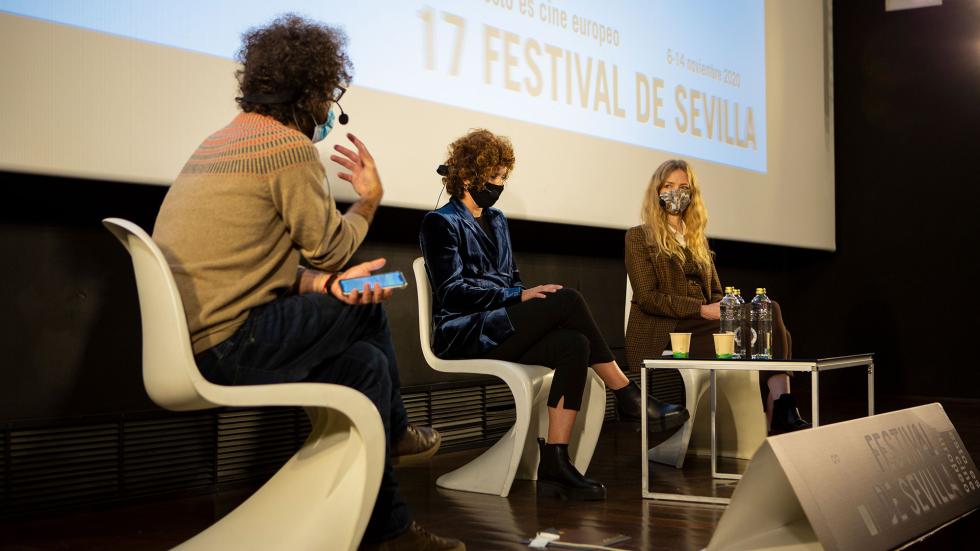Christina Rosenvinge returns to screen to bring to life the author of Out of Africa in the film Karen, by Maria Perez Sanz, a world premiere competing in the Official Section
Actresses Anna Castillo and Petra Martínez play two women who emigrate and maintain an intergenerational friendship in La vida era eso, David Martín de los Santos' first feature film
Two Spanish productions that deal with processes of transformation and which feature female characters are presented in the Official Section. The world premiere of Karen, in which Christina Rosenvinge gives life to the famous writer who used to sign as Isak Dinesen and who belongs to the collective memory thanks to Out of Africa, her book published in 1937 as well as the film made in 1985. Director María Pérez Sanz (Cáceres, 1984) admits that, for her too, Karen Blixen had the face of Meryl Streep, "but now she has Christina's".
The project, which dedicates an intimate look into Blixen-Dinesen's final days in Kenya, did not start off that way. "At first I was interested in bringing a story of settlers in Africa to the Extremadura landscape," said Pérez Sanz. "It was when I started playing with that idea that, suddenly, the presence of Karen Blixen appeared to me very vividly". That's why the film takes place in "a kind of non-time and non-place. The script is inspired by something real, like an anecdote or a letter, and the scenes are treated as if they were parables or vignettes. I wasn't interested in the background of the narration, but in those little everyday moments that are based on the real stories".
Christina Rosenvinge has said that she entered the project to make the music, but in the end she was convinced by the director to become its protagonist: "She might be and not seem to be, such a Bressonian thing, and yet her universe has connections with that of Dinesen. I wanted to film Christina and have Karen's words come out of her mouth. I was interested in the mystery of the two of them, both in fiction and in real life, not in the psychological interpretation of the characters".
The film focuses on the portrayal of her daily life, where her Somali servant Farah Aden was the center. Pérez Sanz has explained that the book by Dinesen that really inspired her was Shadows on the Grass, published shortly before her death. "There, when she looks back at that time in Africa, she is aware that there is no more interesting character than Farah. I think the same thing, and besides, it's a story that hadn't been told before".
Rosenvinge agrees that this is the key to the film, showing "the domestic disaster without idealizing it, with no epics moments nor giraffes. That's where the really important things happen. The film has a universal lesson: the way in which from a defeat, from the rupture of a dream, the true meaning emerges or is found. It is something that transcends Dinesen's own career; she is one of the most important writers of the 20th century even though she only started writing when her life project collapsed entirely.
There is no such thing as a generational relay

Also in the Ofcial Section La vida era eso (Life was that), David Martín de los Santos' first feature film. In it, the filmmaker captures the developed friendship between two women belonging to different generations representing, in addition, the exodus carried out by Spaniards in search of a better future. The story begins with an encounter in a hospital room. "The main inspiration was my mother, born in the post-war period, who was diagnosed with a terminal illness," explained the director. "It was during this mourning process that I asked myself who my parents had been, what social context they had lived in and how that had affected me".
This is how this story came about, which puts on screen the relationship established between an older woman, of Catholic and pro-Franco morals, and a young girl of the so-called liquid modernity, defined by the influential sociologist Zygmunt Bauman. The first is played by Petra Martínez (Petra, La soledad), who praised Martín de los Santos' "marvelous" script, "in the line of that cinema that, when it comes down to it, says a lot but without a dramatic narrative development". The experienced actress was also attracted to this film by the fact that "it features an old lady who embarks on a transformation that is not so much external or aesthetic as intimate and very particular".
Anna Castillo (Adú, Viaje al cuarto de una madre) gives her replica by putting herself in the shoes of a young woman who left the country due to the economic crisis of 2008. "I was very moved by Veronica, my character, because for me she is not an archetype or a metaphor, but an girl I could meet, close and down to earth, for whom there is no generational relay". In this sense, for the young actress, Veronica "is a political character even if she is not aware of it. In fact, the most beautiful thing on an interpretative level is how the film establishes a crossroads in terms of the energy of the characters, who in some way exchange their roles".
After reaping multiple awards with his three previous short fiction films, the director David Martin de los Santos delivers an exciting film that "does not intend to give life lessons" in its treatment of social taboos such as illness and death. This is a debut full of personality and ambition, for which he has been inspired by films such as Función de noche, by Josefina Molina.



